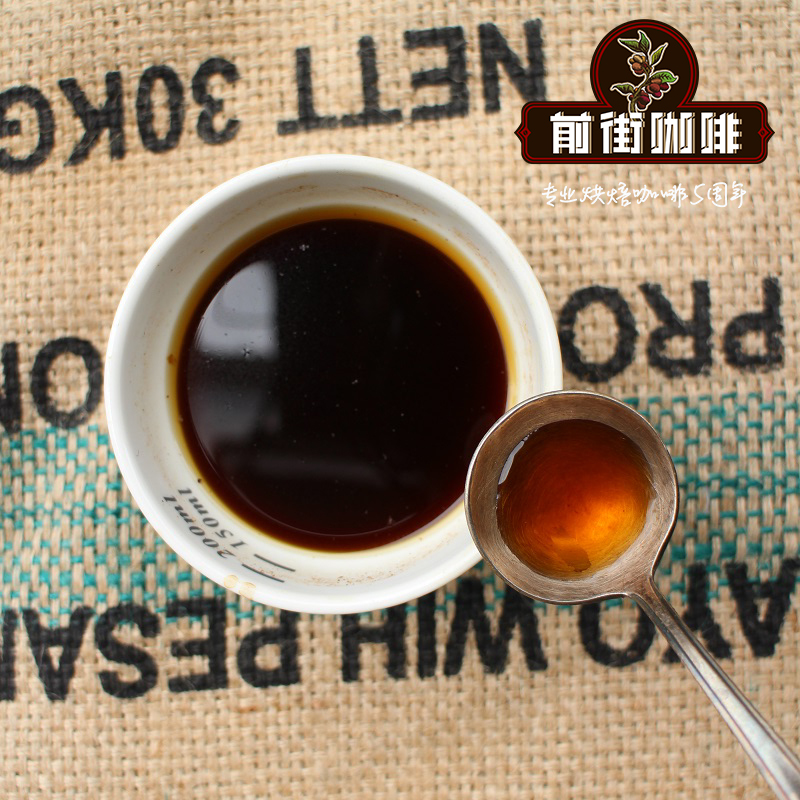Ethiopia mocha coffee Starbucks Ethiopia Ethiopia

Professional coffee knowledge exchange more coffee bean information please follow the coffee workshop (Wechat official account cafe_style)
Yemen is located on the Arabian Peninsula of the Asian continent, but it is very close to the African continent as long as it crosses the Red Sea and the Gulf of Aden. However, other Arab countries do not produce coffee, so the world classifies Yemen Coffee as a member of North African coffee.
So what is Yemenmoka? Mocha is the export port of Yemen coffee, because it is difficult to name all the very small sub-producing areas in the history of coffee trade, even though these small producing areas produce very good coffee, so they have to use the name of the place of export. nearby sun beans, including East Africa, were exported from the port of Mocha to all parts of the world in the early days, and now the port of Mocha has long been silted up and disappeared. Many Ethiopian sun beans also name themselves mocha, such as the Haramoka, which we know well. I think this is because its flavor has a little bit in common with Yemen coffee.
Yemenmoka, it is rare for a coffee to have wild, game, wine, fig flavor, while at the same time contains mild, changeable, and strong chocolate flavor. Yemenmoka, once praised as an Arab wine, is a gift from Allah. Precisely because the original coffee trade was exported from the port of Mocha in Yemen, many people mistakenly thought that Yemen was the birthplace of coffee.
Up to now, some Europeans are still used to calling coffee mocha. Since the 17th century, coffee beans grown in dry Arabian soil and lack of moisture in the air have been particularly hard and small. Mocha production has been limited by local political upheaval and uneconomical planting. Among them, Yemenmoka is represented by Mattari from Bani Matar, which has a sweet, smooth and unique flavor. Slightly sour and strong aftereffect, I think it is the most suitable coffee to drink after a meal, and it is also the best in mocha.
Over the centuries, the rough and primitive method of growing coffee has been slightly improved. Coffee trees are planted in small parks on steep slopes, which are inaccessible areas. The coffee beans grown here are very hard and small because of the dry Arab soil and lack of moisture in the air. The elaborate irrigation system diverts the spring to a trapezoidal coffee garden surrounded by soil and low walls. All this work is done by manpower. Coffee beans are mostly sunburned on the roof or flat ground. Oddly enough, coffee drinks are not very popular in the area where coffee was first drunk, and the way coffee is made is terrible. Coffee juice is usually boiled in bean clips.
Small farm farmers are more attentive to cultivating a medicinal plant called qat, because it is popular to chew quarts and neglect coffee trees. Mocha production is still limited by local political upheaval and uneconomical cultivation. Mocha coffee was named after Moka, the earliest coffee export port, supplying global coffee commercial transactions until the end of the 17th century.
Since people started drinking coffee, mocha has been recognized as a good coffee with distinctive acidity, and some people think that mocha's special acidity is menacing. That's because after a hard day's work, people's sense of taste becomes dull to delicacy. The coffee itself is very fragrant.
Starbucks' Ethiopian coffee is also quite good.
Important Notice :
前街咖啡 FrontStreet Coffee has moved to new addredd:
FrontStreet Coffee Address: 315,Donghua East Road,GuangZhou
Tel:020 38364473
- Prev

What's the quality of Zimbabwean coffee? Zimbabwe Starbucks coffee
Professional coffee knowledge exchange more coffee bean information please pay attention to the coffee workshop (Wechat official account cafe_style) Africa is like everyone's impression, they have higher temperature and less moisture. So for beans on the African side, most of them are treated in the sun. Because it is directly exposed to the sun in an open area, there may be some sundries.
- Next

What are coffee roasting defects | what are the characteristics of baking defects | judgment of baking defects
Professional coffee knowledge exchange more coffee bean information Please pay attention to the coffee workshop (Wechat official account cafe_style) when it comes to coffee defects, most of the time you think of either mixed with defective beans, or brewing problems, in fact, there is another situation, that is, baking defects! So what are baking flaws? Qianjie Coffee to introduce to you! Baked beans are
Related
- Beginners will see the "Coffee pull flower" guide!
- What is the difference between ice blog purified milk and ordinary milk coffee?
- Why is the Philippines the largest producer of crops in Liberia?
- For coffee extraction, should the fine powder be retained?
- How does extracted espresso fill pressed powder? How much strength does it take to press the powder?
- How to make jasmine cold extract coffee? Is the jasmine + latte good?
- Will this little toy really make the coffee taste better? How does Lily Drip affect coffee extraction?
- Will the action of slapping the filter cup also affect coffee extraction?
- What's the difference between powder-to-water ratio and powder-to-liquid ratio?
- What is the Ethiopian local species? What does it have to do with Heirloom native species?

